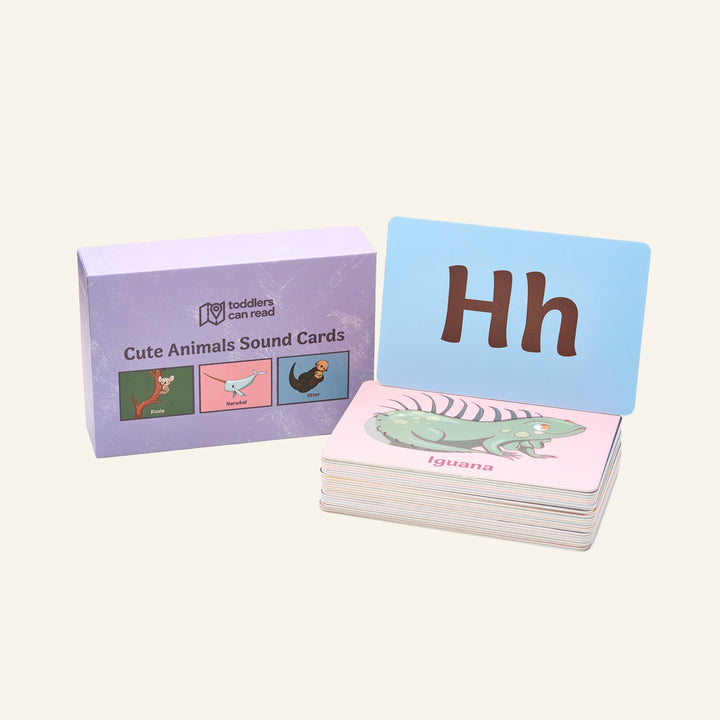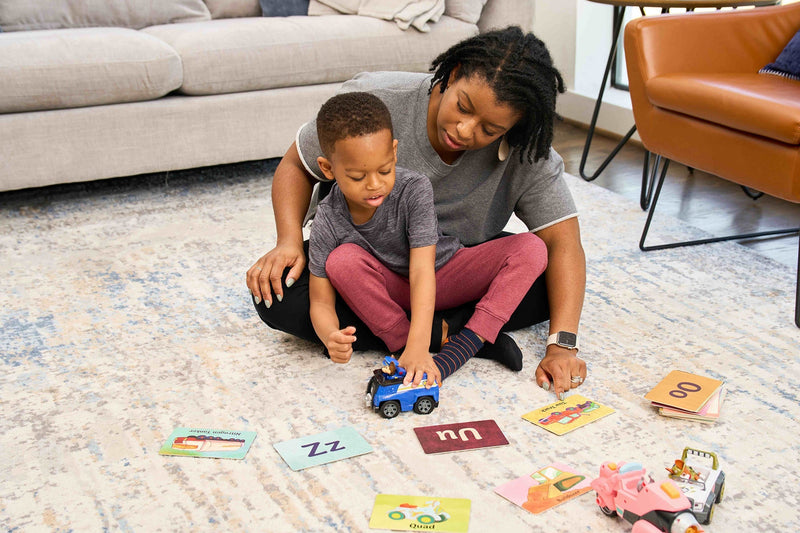Teaching your little one their letter sounds may seem really easy at first. There are 26 letters in the alphabet, so all they have to do is learn 26 sounds, and they'll be able to read any word, right?
Of course not. But if you're reading this right now, you already know that. English can be tricky; there are letters that make more than one sound, sounds that have more than one spelling, and letters that, when paired together, make a completely different sound.
And if you're the parent of a little one who is ready to learn their letter sounds, this might make teaching the sounds feel overwhelming.

And I know, I know: This might seem complicated, but I promise you that teaching letters with more than one sound doesn't have to be difficult. And I'll break this down for you in plain language—no fancy words or complicated explanations. Just a simple explanation so you know exactly what to do.
Find the pattern.
When you teach a letter that makes two sounds, the first thing you need to do is figure out what the rules are for when the letter makes each sound.
Let's use our earlier example of the letter C. It can make the hard C /k/ sound as in cat or the soft C /s/ sound as in cent. To figure out what the rules are for /k/ vs. /s/, you'll need to look for a pattern for when it makes each sound.
Can you spot the pattern below?

If you look at enough words, you'll see that the hard C /k/ sound is usually followed by a u, o, (ex: cap, cot, game). Whereas the soft C /s/ sound is usually followed by e, i, y (ex: cell, city, cycle).
So, the rule would go something like this: C makes the /k/ sound when followed by a, o, or u and the /s/ sound when followed by e, i, or y. And this rule will always hold true.
Now in this case, we gave some word examples for you. But in less than a minute, you can do this same exercise with any other letter you're thinking of.
Want to know why G says /g/ but other times says /j/? Make a list and look for patterns. Want to understand when OO says /u/ vs. when it says /oo/? Write it down and spot the pattern.
As an adult, you know how to read all of these words with letters that make multiple sounds; you just probably don't remember the rules. But using this method, you can figure out what these rules are for yourself and use that knowledge to help teach your little one!
And to make it a little easier on you, I've gone ahead and put a few examples into the chart below:

Once you've figured out what the rules are for the letter that you're teaching, you'll follow 4 simple steps to help your little one master both sounds... but more on that in part 2!
In the meantime, if you're feeling really overwhelmed at the thought of teaching letter sounds in general (or just want a little extra support,) my Learning Sounds course is going to be a great resource. It includes which sounds to start with, how many sounds to teach at a time, what to do if your little one is struggling with a specific sound, and a lot more.
And no matter how overwhelming teaching your child to read might seem, remember that YOU have everything you need to help them be successful—and I'll be here to support you every step of the way.









